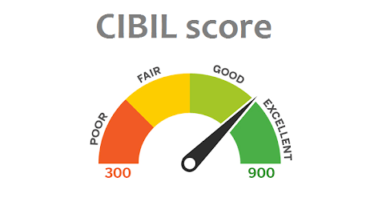Insider Tips for Maximizing Mutual Fund Returns
Investing in mutual funds is one of the most popular ways to grow your money. It doesn’t require a lot of investment knowledge, and the payouts are often higher compared to other fixed-income products. Index funds, in particular, have been gaining popularity in recent times. But, what are index funds, and how can you maximize their returns? This article explores the benefits of investing in index funds and offers tips for boosting your returns.
Contents
What are Index Funds?
Index funds are a type of mutual fund that tracks a specific stock market index, like the BSE Sensex or the Nifty 50. They work by investing your money in the same stocks as the chosen index in the same proportion. The idea behind index funds is to provide a diversified portfolio that includes all the companies included in a particular index. This helps mitigate risks, and in turn, delivers more stable returns.
One of the key advantages of index funds is the lower expense ratio compared to actively managed funds. Because index funds don’t require a dedicated fund manager, the fees associated with them are lower. This means that you get to keep more of your returns, which can add up to a sizeable sum over the long run.
Another benefit of index funds is their transparency. Unlike actively managed funds, you always know what stocks your money is invested in, and what the charges are. This helps you make informed choices, and gives you better control over your investments.
How to Maximize Mutual Fund Returns
Now that you know what index funds are, how can you maximize their returns? Here are some tips to help you make the most of your investment.
1. Understand the NAV
NAV, or net asset value, is the value of a mutual fund scheme’s assets minus its liabilities. NAV is typically used to calculate the value of a mutual fund’s units. To calculate NAV, divide the total value of the assets (minus liabilities) by the number of outstanding units.
Knowing the NAV can help you make informed investment decisions. For instance, if the NAV of a mutual fund has been steadily increasing over the last five years, it may be a good investment for the long-term. Similarly, if a mutual fund has a low NAV, it may be a sign that it is underperforming.
2. Pay Attention to Expense Ratios
Expense ratio includes the costs of managing the fund, marketing expenses, legal and custodial fees. Expense ratios can significantly impact your returns, so it’s important to pay attention to them.
Lower expense ratios mean more money stays in the fund, resulting in higher returns. A 1% expense ratio may not seem like much, but it can add up to thousands of rupees in fees over the years.
3. Avoid Frequent Trading
Frequent trading can be tempting, especially if you see the value of your fund dropping. However, avoiding frequent trading is often an excellent strategy for maximizing mutual fund returns. That’s because of the hidden costs of trading, like brokerage charges, taxes, and transaction charges.
Short-term capital gains tax is applicable to investment in mutual funds if the investment holding period is less than 1 year. The short-term capital gain tax is 15% of the profit made on investment. However, if you hold units purchased in a mutual fund for more than 1 year, the long-term capital gain tax is 10% of the profit above Rs.1 lakh ($1,360).
If you regularly shift between funds, these taxes can significantly lower your returns. Instead, focus on long-term goals, and only make changes to your portfolio as needed.
4. Diversify Your Portfolio
When you invest in mutual funds, diversification can help you mitigate risks and maximize returns. Don’t put all your eggs in one basket, as that can increase the risk of loss due to a single stock’s poor performance.
Instead, invest in a mix of asset classes, such as equity, debt, and gold. This way, when one asset class performs poorly, the others can help balance out your portfolio.
5. Stay Invested for the Long-Term
Investing in mutual funds requires patience and discipline. It’s important to stay invested for the long-term to maximize returns. History shows that the Indian stock market has always trended upwards, even if there are periods of volatility and downturns.
For example, if you had invested Rs. 10,000 in HDFC Equity Fund (growth) five years ago, it would be worth Rs. 21,290. Similarly, if you had invested in Axis Bluechip Fund (growth) five years ago, your investment of Rs. 10,000 would be worth Rs. 21,467 today (as of September 2021). This shows that if you stay invested for the long-term, you can benefit from the power of compounding and maximize your returns.
Final Thoughts
Investing in mutual funds can be a lucrative way to grow your money, but it’s important to take a strategic approach. Index funds are a popular way to invest in a diversified portfolio that tracks a market index. By understanding the NAV, paying attention to expense ratios, avoiding frequent trading, diversifying your portfolio, and staying invested for the long-term, you can maximize your mutual fund returns and achieve your financial goals.
Disclaimer: Investing in the Indian financial market involves risks, and the returns are not guaranteed. Before investing, it’s important to weigh all the pros and cons, taking into account your financial goals, investment horizon, and risk tolerance. It’s always advisable to consult with a professional financial advisor before making any investment decisions.




